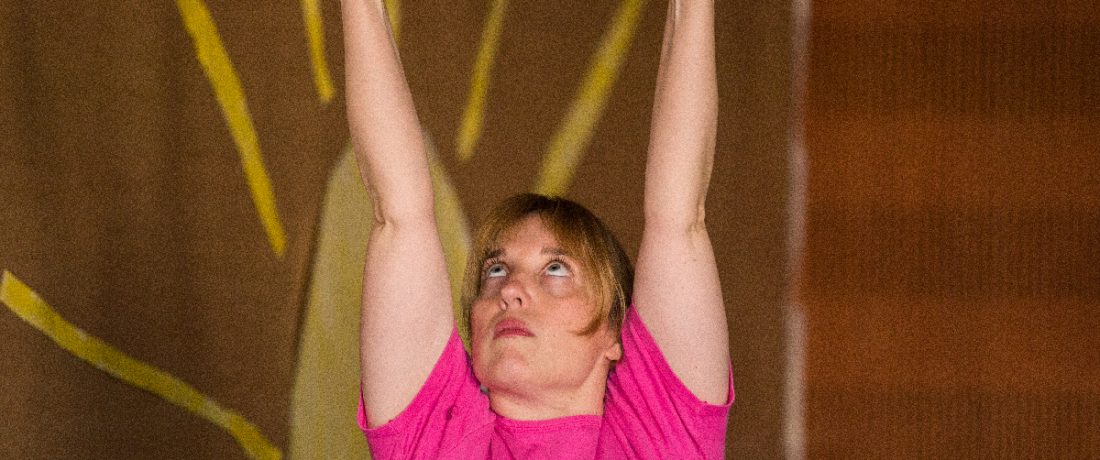
Responding to External Impulses
TARGET GROUP
Adults and children with or without visual impairmentsPARTICIPANTS
20DURATION
1.5 hoursORGANIZATION
Onassis StegiGoal - Essential question
The main objective of this task is to transfer the focus and attention of the dancer and musician outside of themselves. Focusing on listening, observing, being and sharing the group experiences a situation of multiple interactions that occur in subtle and intense ways. Every sound, body posture, gesture and movement in space both manifested or not, becomes an open environment of interaction and commoning.
This task’s challenge lies in the indivisibility of the dancer’s body from the dance.
According to Whatley’s and Marsh’s “Making no Difference” this is presented as a paradox. “If the dancer’s disability is visible then the disability is once again made hypervisible; disability becomes performative and hence the familiar condition of the disabled person always performing their disability; Conversely, if the disability is unseen, then the dancer might find herself treated no differently than any other non-disabled students. Whilst full integration might be desirable the absence of any appropriate adaptation or mitigation may present different proble
Description of task
The group gets in pairs. One accepts the impulses (person 1) the other proposes them (person 2).
Step1: Impulse
They start standing and person 1 touches different body parts of the other. Gradually this becomes an impulse and creates a small movement in the body part. Try to cover the whole body.
Step 2: Direction
The impulse gives a direction in the movement path and person 1 moves through changing levels (standing-middle level-floor level) and in space guided through the external impulses he/she receives.
Step 3: Movement Phrase and Change
Gradually accelerate the rhythm while trust between the two is created. Person 1 continues to move recreating the feeling and memory of the stimulation received and experience the quality of moving from an outside impulse even without the impulse.
Step 4: Improvisation
The impulse comes back and the couple plays with resistance, weight and lightness, absorption and deviation of the direction of the movement. This leads to an improvisational solo that uses contact and explores different possibilities of relating to another body.
